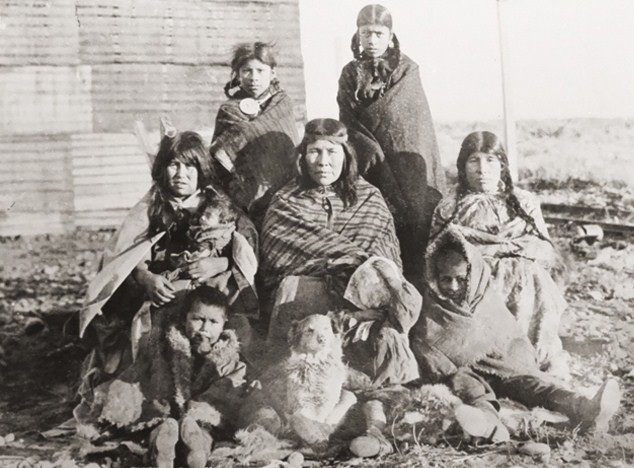Sadly, disease and conflict brought about the demise of these people, but when the channels of Patagonia and Tierra del Fuego were first navigated, visitors happened upon a unique culture.
One such visitor was the British sailor, explorer and writer, George Chaworth Musters, who visited Patagonia in 1870 and spent a considerable amount of time with the Tehuelches Indians (also known as Patagones which means “big feet” on account of the native people’s impressive tread).
Musters travelled from the Southern to Northern tip of Patagonia, traversing ground from the Santa Cruz River to the River Negro, which marks the northern border of Patagonia.
In 1873, following this trip, Musters published a book about his adventures. It is called At Home with the Patagonians, and within its pages the Englishman imparts snippets of his time with the Tehuelches.

The Tehuelches Indians
As I rode along in company with an Indian, named ‘Tchang,’ he began asking me questions: first, ‘Who is cacique of the English?’
I explained to him that it was Her Gracious Majesty.
‘Is she married?’
‘She is a widow.’
‘Has she any children, and how many? Has she lots of horses and mares and silver ornaments?’
And so on, until I had satisfied him; after which he rode along, repeating, ‘A woman cacique! A woman cacique! Four sons and five daughters! Lots of horses, mares, sheep, and cattle!
Musters had heard about the impressive stature of the native people from reading notes of trips made by his predecessors. At one point he mentions how Captain Magellan, who visited Patagonia in the 1520s, described the Tehuelches as: larger and taller than the stoutest man of Castile.
Musters continues to say:Eighteen natives afterwards arrived, dressed in cloaks of skins and shoes of guanaco hide, which made huge footmarks, whence they were called Patagonés, or “large feet”, by the Spaniards; and thus originated in a nickname the name of the country, Patagonia.
Magellan was not the only explorer to take down accounts of the Tehuelches in the 1500s. Sir Francis Drake anchored in Seal Bay in the 1570s and saw several Indians. His chaplain narrated their method of stalking the ostriches:
They have a plume of ostrich feathers on a long staff, large enough to hide a man behind, and with this they stalk the ostriches.
Magellan was not altogether wrong in naming them giants, yet they are not taller than some Englishmen.
There were undoubtedly some very tall men amongst them, but what struck me particularly was their splendid development of chest and arms.

The Tehuelches Indians
Most of these observations are neutral and seem somewhat distant. That is, until you reach this passage by Musters:
During our stay here I nearly fell a victim to a matrimonial entanglement.
A fair young Indian, whose hair cut across the forehead denoted widowhood, moreover having several mares and considerable possessions, to whom I had perhaps paid some slight attention, proposed that I should set up to do with her.
This was quite out of my programme of the journey, but inasmuch as the alliance might prove useful, as well as agreeable, and feeling lonely in the absence of any particular friend, I half agreed; so a go-between was dispatched to arrange the dowry, and it was settled that I should give a revolver in exchange for two horses to be provided by the fair one’s friends.
However, the evening before the happy day on which we were to have been united, the alarm came, and as she belonged to the Southern Indians, I thought better of giving up my arms; so I assigned as a reason for withdrawing from the bargain, that I did not wish to leave my friend Orkeke.
I have no doubt that her people, desiring the help of my firearms, had suggested the match to secure me to support their side. The lady at first was rather disgusted, but soon got over it, and we remained on our former friendly terms.
At Home with the Patagonians – 1873. by George Chaworth Musters

